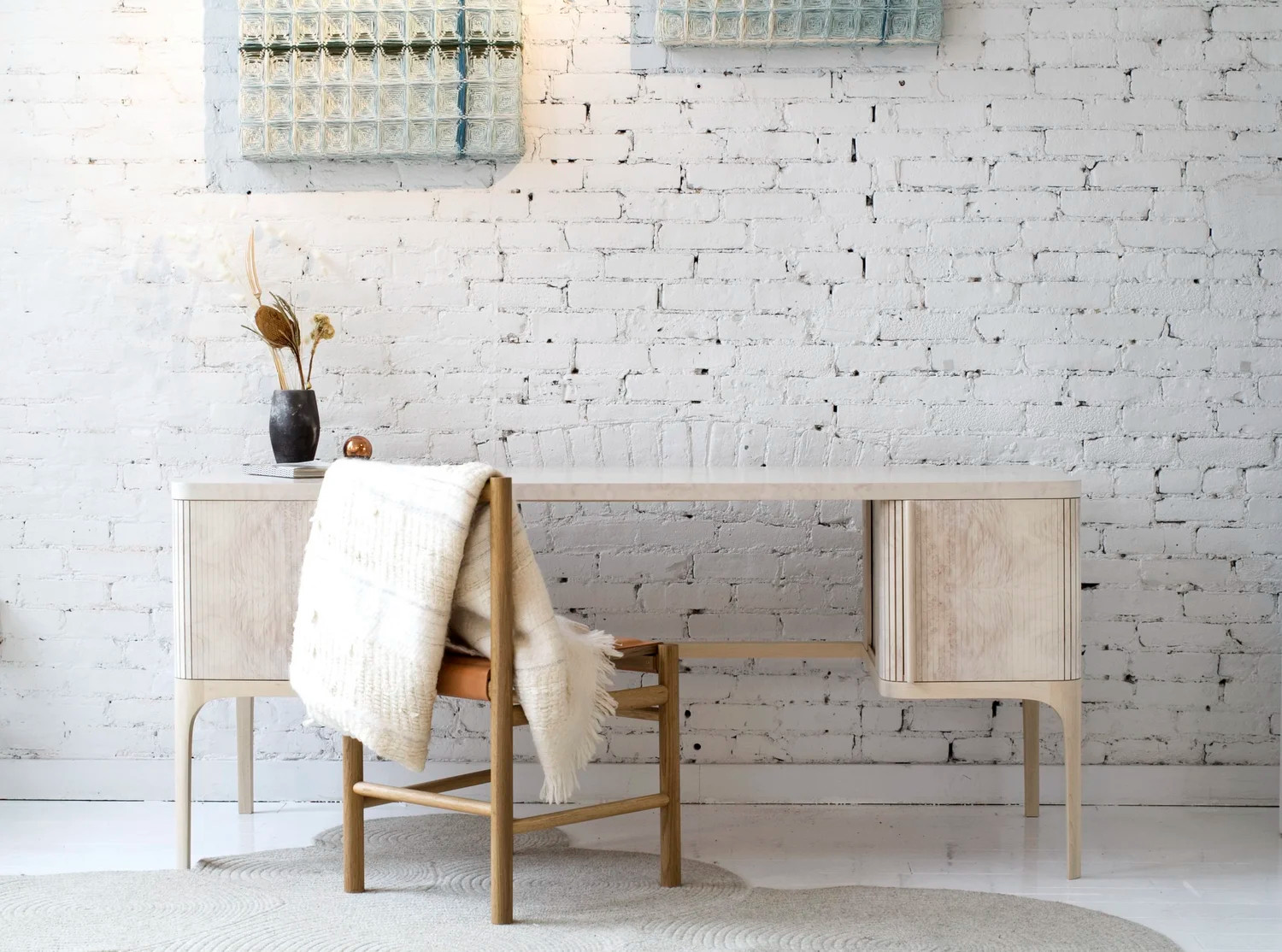Meet the Maker Using Robots to Craft Custom Millwork and Furniture
Designer Aaron Poritz combines a futuristic process with beautiful old woods to form stunning works of collectible design

Four years ago, Aaron Poritz had a chance encounter that would completely transform his creative process and business. The then-37-year-old designer, who studied architecture at California College of the Arts, had a wood shop in the Brooklyn Navy Yard where he created his own line of furniture as well as custom commissions. Walking through the “Yard” one evening on his way home, he passed a ground-floor studio with the garage-like door open revealing “a mad scientist-type guy surrounded by ten robots. I’d never seen anything like this, it was so crazy, and I walked in.”
His emboldened curiosity resulted in him meeting a “mechanical engineering genius” who had been working with robots for over a decade to fabricate museum-quality pieces for major artists. That man became his friend, mentor, and robot whisperer.



Today the Leverett, Massachusetts native owns two robots, acquired through the aforementioned genius, that he uses to meticulously craft everything from custom millwork and furniture (for clients including Nicole Fuller, Sasha Bikoff, Rockwell Group, Fox-Nahem, Leroy Street Studio, and Thomas Juul-Hansen) to his own designs including Tambour, a collection of predominantly case goods—cabinets, tables, credenzas, and consoles, and the crazy curvaceous and sculptural Big Woods functional art pieces he shows with Cristina Grajales gallery in TriBeCa.
Most of these pieces are made using incredibly beautiful rescued woods—100-year-old walnut trees retired from a Northern California orchard that was being replanted, white oak, ash, and hemlock felled by invasive pests. His designs begin with a sketch that he then fashions into a clay maquette (Poritz has been working with ceramics since he was a was a child) which he scans. “I design and work and make in a primitive way, but I use technology to help facilitate the actual fabrication of the piece,” he explained of his process. Using robots, he notes, “completely opens up what I can do in terms of exploring new forms and working with more amorphous shapes.”


Poritz, whose father taught sculpture and design at institutions including Skidmore College and The Whitney Museum of American Art, is currently producing new works ranging from his first upholstered pieces to a nature-inspired collection of functional objects birthed on a recent trip to Greece. He’s also expanding his designs in bronze—Peter Marino has used several of his bronze lounge chairs in Chanel stores—that he’s now producing in artist Alma Allen’s foundry in Tepoztlán, Mexico.
His fingers are in a variety of creative pies that don’t necessarily look like they came from the same bakery. This is intentional. “I strive for every new collection to look as though a different person could have designed it,” he says. “It’s important to me to continue exploring new ideas, new ways of making, and new styles.”